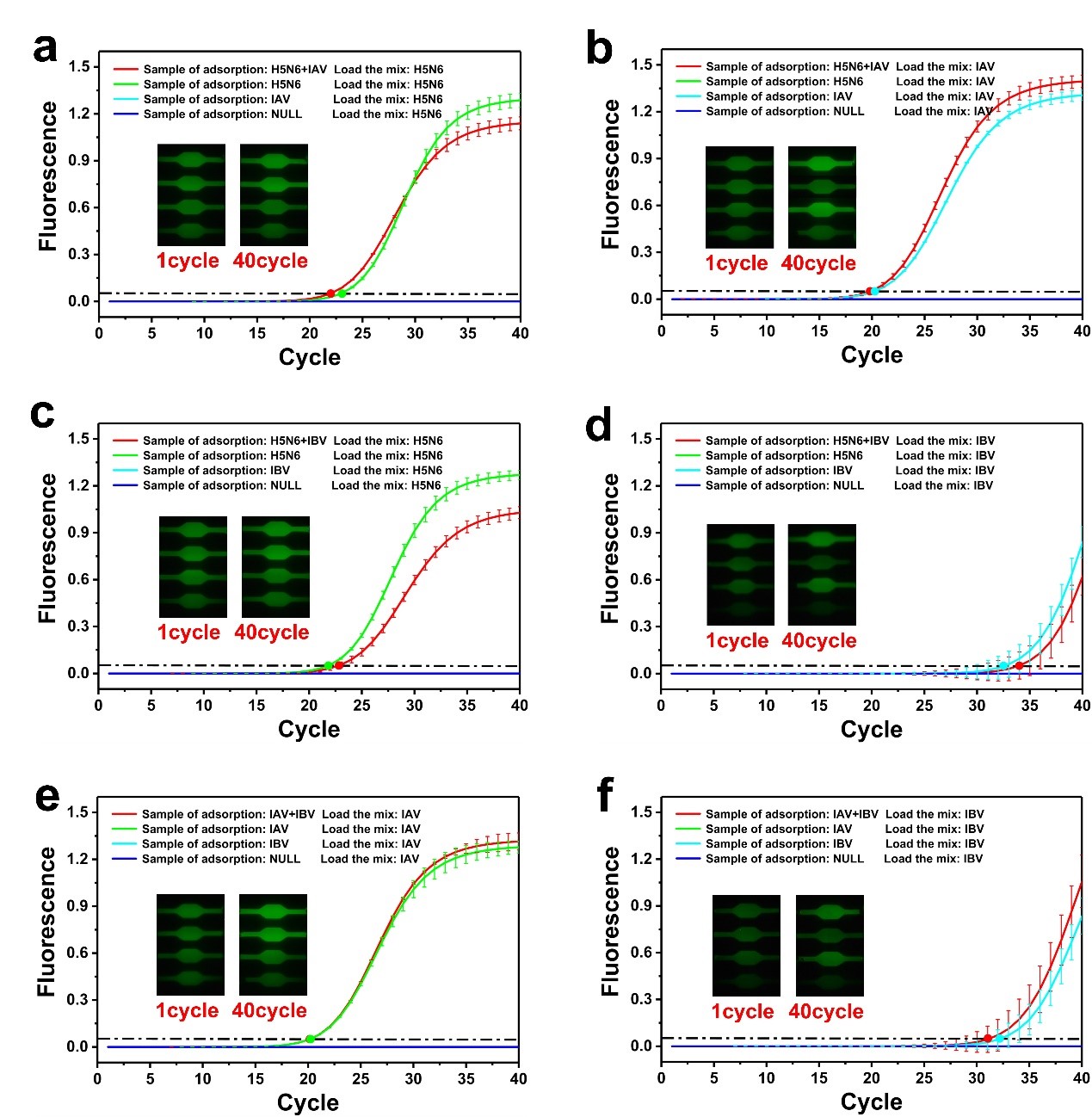
Recently, the biomedical optics research team in Anhui Institute of Optics and Fine Mechanics, Hefei Institutes of Physical Science of Chinese Academy of Sciences (CAS), developed a device for on-site immediate detection of pathogen nucleic acid.
The research results were published in Analytica Chimica Acta.
Microfluidic chips have been widely used in the nucleic acid detection of pathogens. The chips often use magnetic beads or silica gel films with high specific surface area to adsorb nucleic acid, but it may also lead to more residual fluid release agents and impurities. Therefore, microfluidic chips usually need to integrate multiple reagent storage tubes and perform fluid control in combination with microvalves and micropumps, to realize nucleic acid extraction and impurity cleaning. The complicated structure increases the complexity of the preparation process and supporting detection equipment of microfluidic chips.
In this study, the mobile kit (Mkit) consisted of a chitosan-modified minimalistic microfluidic chip (CM3-chip) and smartphone, which realized the point-of-care testing of the nucleic acid of pathogens.
The lumen wall of CM3-chip was modified with chitosan. Under acidic pH conditions, the primary amine in chitosan (pKa = 6.2 to 7.0) was positively charged. The Hofmeister effect showed that protonated amines were more likely to bond to negatively charged nucleic acids than other ions through the electrostatic interactions. CM3-chip could be directly amplified in situ after the enrichment of nucleic acid. Smartphones were used to control the whole process of detection, including temperature control, image acquisition, data processing and result analysis.
Mkit offered various advantages over traditional methods, including no centrifugation, no complex cleaning, no magnet attachment, and high sensitivity. The universality, selectivity and user friendliness of the detection equipment were verified through a series of biological experiments.
The detection equipment is universally applicable, selective, and user-friendly, as demonstrated by its successful use in identifying respiratory infectious agents with similar clinical symptoms. To further confirm its clinical diagnostic potential, artificially prepared saliva samples of H5N6 and IAV infections were also successfully detected using Mkit.
This work was supported by the Youth Innovation Promotion Association of Chinese Academy of Sciences and the Key Research and Development Program of Anhui Province.

Detection process (Image by YANG Ke)

Detection results (Image by YANG Ke)